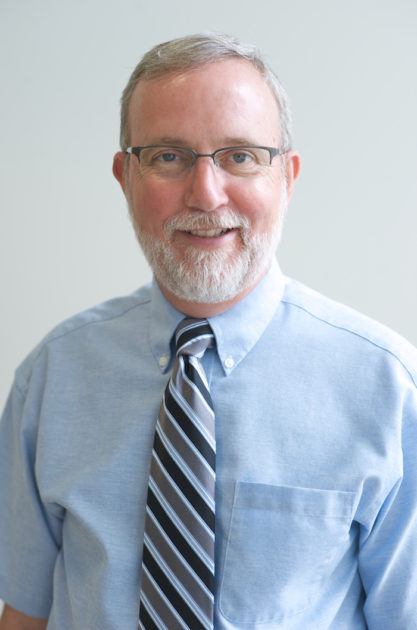Richard Waugh is catching up on his research after serving in multiple leadership positions.

Richard Waugh is anticipating getting back to his research lab full time after stepping down as the vice provost for research at the University of Rochester on July 1.
Waugh, an expert in cell deformability and cell adhesion—particularly in blood cells—is excited about two federally funded research projects he will pursue.
One project—with James McGrath, professor of biomedical engineering—will use human endothelial cells, arranged on silicon nanomembranes inside miniaturized chips, to mimic the blood-brain barrier. The goal is to find ways to prevent the cognitive dysfunction caused by sepsis.
The other—with Minsoo Kim, professor of microbiology and immunology—will explore the role that the spectrin protein could play in controlling the “overblown immune response” that sometimes occurs when promising new CAR T-cell therapies are used to treat cancer.
Waugh will also have time to tackle a backlog of data that his lab has accumulated. He’s anxious to get it published “to make sure that all of our accomplishments actually see the light of day,” Waugh says.
Leadership roles that resulted in ‘great strides’
Waugh has held various leadership positions at the University dating back to 1995, when, as a professor of biophysics, he was also director of graduate studies in that department.
Since then, with no breaks in between, he has also served as:
- director of graduate studies in biomedical engineering
- director of the biomedical engineering interdepartmental program (before it became a department in 2000)
- chair of the new department (until 2016)
- associate vice president for research
- interim dean of the faculty of Arts, Sciences & Engineering
- vice provost for research
Provost Rob Clark praised Waugh’s contributions in announcing recent leadership changes. “Thanks to Rick’s leadership, institutional knowledge, and ability to build bridges across disciplines, our research enterprise has made great strides over the past decade. He’s a true faculty scholar who always made sure that his colleagues at the University could do their best work.”
Of all his accomplishments as an administrator, Waugh is proudest of his work to create and then expand the Department of Biomedical Engineering.
The department was formed as part of the Rochester Renaissance Plan in the mid- to late-1990s, when Arts, Sciences & Engineering was undergoing hiring freezes and dramatic cost reductions. “When all the departments in AS&E were trying to downsize, I was trying to start a new one,” Waugh says. “I had to fight for every last appointment.”
Later, he orchestrated a “complicated ballet” to expand the department’s joint faculty appointments in medicine, at a time the Medical Center was undergoing cutbacks.
“It was very exciting to see all of this come together from nothing, basically, to graduating 60 or 70 biomedical engineers every year,” Waugh says. “Just in terms of societal impact, that’s really what I’m going to think back on as an important contribution.”
Recently, the department celebrated its 20th anniversary and was ranked 14th in the nation on The Edvocate’s 2022 list of best undergraduate biomedical engineering programs.
A return to research at the cutting edge
Waugh’s agreement with the University allows him to remain as a tenured faculty member for another three years, at which point he will be eligible for an emeritus appointment.
In the meantime, he’s looking forward to partnering with researchers who are expanding the frontiers of their fields.
Kim, for example, “is a superstar and a real pleasure to work with,” Waugh says. “He has really creative ideas about important problems.” If he and Kim can find a way to reduce the likelihood of an uncontrolled immune response in CAR-T cell treatments, while still maintaining the efficacy of the treatment, Waugh says, “it could be game-changing for cell therapeutics in cancer and for a lot of other disorders as well.”
For several years McGrath’s lab has been perfecting its patented ultrathin silicon nanomembranes—less than 200 nanometers thick—for a host of applications, including their use as “ideal barriers” in multi-compartment devices to culture and study human tissue. The sepsis project will employ cutting-edge “organ-on-a-chip” technology that avoids the pitfalls of the traditional approach of using mouse models to mimic human disease mechanisms and test potential cures.
Waugh, who turns 70 this year, is uncertain of his exact plans after tenure. “I suspect I may still want to remain involved” in research, he says, perhaps in an advisory position.
Still, this is the first time in a long time when he will only have to focus on one job—and he is ready for “a chance at setting a better work-life balance,” says Waugh. “My wife has been exceptionally patient while I continued to work full-time-plus after she retired five years ago. We are both anxious to do some traveling and enjoy our time together in the coming years.
“A lot can happen in three years,” he says. “We will see how it goes.”


